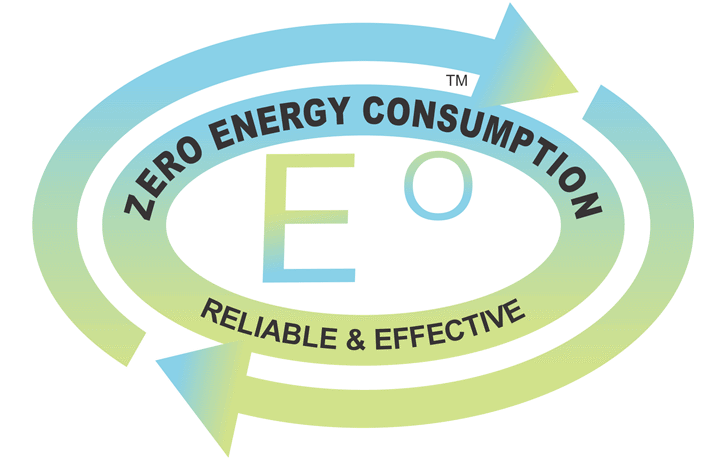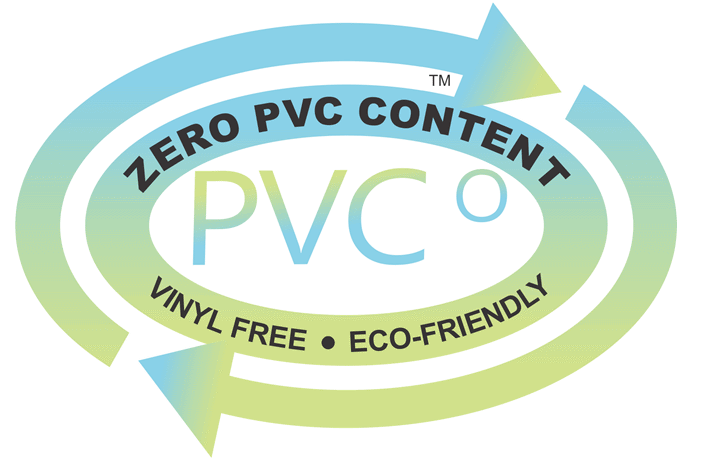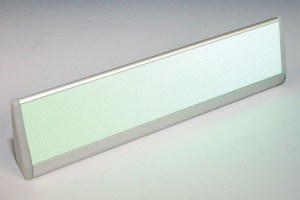EverGlow Photoluminescent Signs & Markings are reliable & effective, non-electrical & green!
It's not very green to replace batteries, lamps and entire fixtures every year.
- Conservation
- Sustainability
- Energy Efficiency
Contact EverGlow
Toll Free: (1) 866-744-4706
Telephone: (1) 704-841-2580
Email Us: This email address is being protected from spambots. You need JavaScript enabled to view it.
EverGlow Signs & Markings:
- Consume No Electricity
- Need No Batteries
- Contain No Toxic Components
- Contain No Radioactive Components
- Are LONG LASTING—Expected Life of More Than 25 Years
- Can be 100% Recycled
- Use Very High Content of Recycled Materials
- Contain NO PVC
- Are manufactured Responsibly Using Low VOC Inks and Coatings
LEED Certification
- EA Credit #1— Energy and Atmosphere, optimizing energy performance
- MR Credit #4— Materials and Resources, high recycled aluminum content
- ID Credit #1.1— Innovation in Design, performance of non-electrical exit signs
EverGlow Exit Signs, which are tested and evaluated to the UL924 performance standard, met US Environmental Protection Agency and US Department of Energy, ENERGY STAR, requirements. Photoluminescent signs are the only non-radioactive and non-electrical exit signs available which meet the ENERGY STAR designation. ENERGY STAR recently suspended their listing for all electrical and non-electrical exit signs. Electric signs are currently unable to meet the former ENERGY STAR requirements for reduced energy consumption.
SAVE LIVES
SAVE MONEY
SAVE THE ENVIRONMENT
EverGlow Emergency Lighting Lasts Many Hours Longer than Batteries or Generators
 EverGlow Signs & Markers
EverGlow Signs & MarkersConsume ZERO Energy!
 EverGlow Signs & Markers
EverGlow Signs & Markersare VINYL Free!
Expect to spend more money on energy in the future?
Want to decrease energy spending during peak load periods?
Photoluminescent signs, markers and coatings require charging from normal lighting when the building is occupied. Glow pigments on EverGlow signs and markings can be adequately and safely charged with daylight and ordinary interior lighting.
If you have already invested in more energy efficient lighting, you may want to consider EverGlow photoluminescent supplemental emergency lighting, exit signs and exit path markings. Buildings have a huge appetite for energy; more than 30% of the energy consumed by your building is for lighting. Make the most of your investment. Our glow pigments are designed to perform with new LED, compact fluorescent and other higher efficiency lighting. They do not degrade under artificial interior lighting or bright daylighting conditions. In fact, with few exceptions, as you move away from incandescent lighting, our photoluminescent signs and markings perform better and help you save more money! EverGlow photoluminescent exit signs also help you decrease your base energy consumption. Your electricity supplier will eventually implement demand response and this will provide additional financial incentives to consume less energy.
NAVIGATING THE ELECTRICITY MARKET.
Lindsay Audin. Building Operating Management, Trade Press Publishing Corp. October 2007.
ASSESSMENT OF DEMAND RESPONSE and ADVANCED METERING.
Federal Energy Regulatory Commission. September 2007.
Electricity Prices in 2006 Showed Largest Increase Since 1981
The retail price of electricity increased by more than 9 percent in 2006, the largest increase since 1981. Fourteen states and the District of Columbia saw the average price of electricity rise by 10 percent or more between 2005 and 2006, according to "Electric Power Annual 2006", released today by the Energy Information Administration. Electricity prices increased in all regions of the country but most of the larger increases were in the East.
The main factor leading to these increases was the lifting of retail electricity price caps in States transitioning to competitive retail markets, allowing the pass-through to consumers of previous increases in costs that had not been completely reflected in prices during the duration of the caps.
The complete report, Electric Power Annual 2006 can be found on EIA's web site at:
http://www.eia.doe.gov/cneaf/electricity
Thinking of Other Ways to Save Money?
EverGlow photoluminescent signs and markings are the most reliable and effective safety solutions available today which provide an affordable initial investment with a payback of 12 months or less.
Consider the money you will save because you do not have light bulbs or batteries to change and the labor costs associated with these activities. Your only maintenance costs are the cleaning costs necessary to maintain the performance of the signs and markings.
Consider that EverGlow glow pigments are designed to charge properly in relatively low illuminations levels. UL listed exit signs must have a minimum of 5 ft-candles of illumination on the face of the sign (from normal cool white fluorescent lighting in the room or hallway). Exit path markings are designed to perform with only 1 or 2 ft-candles of illumination at the floor level from normal lighting in the exits (this is the minimum required by most building and fire codes). Many buildings far exceed these levels of lighting and can save by using lower wattage lamps, especially in those areas which are not typically used except for emergency evacuations.
Consider also that many states and local utilities provide incentives to purchase emergency lighting and exit signs which consume less (or no) electricity.
DSIRE - Database of State Incentives for Renewables and Energy Efficiency
Considering using dimmers or timers to save energy on general lighting? Remember that life safety cannot be compromised to save energy! Every energy code in North America makes exceptions for minimum lighting levels so as not to contradict the various building codes and regulations for life safety. No general lighting controls can decrease the labor & maintenance required for electrical emergency lighting and exit signs.
The California Energy Efficiency Standard (2005) states: Lighting in areas within a building that must be continuously illuminated for reasons of building security or emergency egress are exempt from the switching requirements for a maximum of 0.5 W per square foot along the path of egress. These lights must be installed in areas designated as security or emergency egress areas on the plans, and must be controlled by switches accessible only to authorized personnel. The remaining lighting in the area, however, is still subject to the area switching requirements.
New energy conservation standards are requiring that commercial building owners design and operate new structures that will consume less energy and have a minimal environmental impact. Owners and managers of existing buildings are also taking measures to reduce the environmental and energy footprints of their structures and renovation projects.
OSHA and the Building, Fire and Life Safety Codes require that all components of the means of egress be well marked and lit. There is no compromise of life safety by any of these inspectors. There is specific language in the codes that allows the use of automatic lighting controls.
There are measurable energy saving opportunities in new and existing buildings by reducing lighting to allowable minimums in the means of egress. But these changes must comply with code requirements and must not sacrifice life safety. For instance, building and fire codes require a minimum of 1 or 2 ft-candles of illumination from interior lighting (measured at floor level) in the means of egress. NFPA 101 requires substantially more illumination on exit stairs- 10 ft-candles (measured at the stair tread or other walking surface) during conditions of stair use. Many occupancies provide much more than the required minimum illumination and this could be safely controlled to save energy. The codes require that the level of illumination not fall below the minimum required if any single lighting unit fails. EverGlow stair, handrail and floor level exit path marking systems perform to code requirements with these minimum levels of lighting.
There are lawful requirements for the illumination of exit signs. Photoluminescent, radioluminescent and electrical signs are considered to be internally illuminated exit signs and they must be illuminated at all times. The face of photoluminescent exit signs must be continually illuminated with a reliable lighting source of the type specified in the markings on the face of the sign. For locations with sufficient minimum lighting levels, using EverGlow photoluminescent exit signs can reduce energy requirements in your building by at least 5-10 watts per exit sign.
- OSHA states: Each exit sign must be illuminated to a surface value of at least 5 ft-candles by a reliable light source .... (29 CFR: 1910.37(b)(6)- Maintenance, Safeguards, and Operational Features for Exit Routes). OSHA also follows code requirements in the NFPA 101 Life Safety Code.
- The IBC states: Exit signs shall be illuminated at all times. ... The face of an exit sign illuminated from an external source shall have an intensity of not less than 5 ft-candles (International Building Code, 2006 edition: Section 1011- Exit Signs).
- The NFPA 101 states: Every sign required by 7.10 ... shall be suitably illuminated by a reliable light source. ... Externally illuminated signs shall be illuminated by not less than 5 ft-candles ... (NFPA 101, 2006 edition: 7.10.5- Illumination of Signs).




